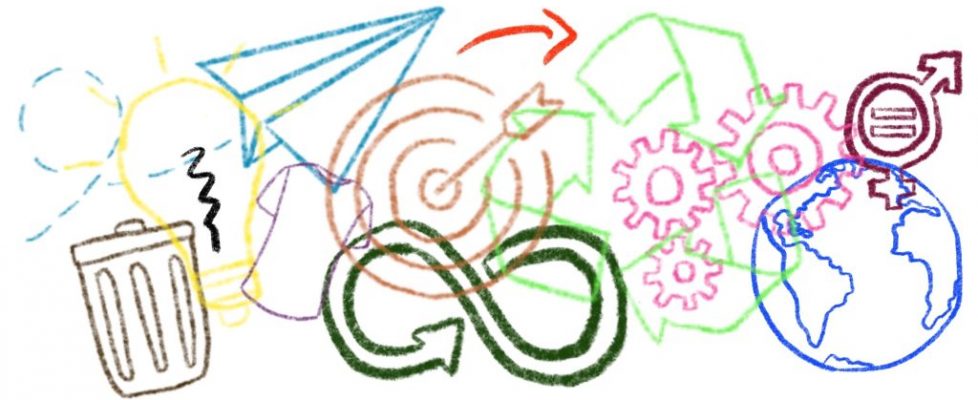Planet
London College of Fashion’s Business School strategy is established by the phrase “Fashion means business”, an integral part of the institute’s strategy and mission and comprises four pillars; people, planet, profit and purpose. The first pillar that was apprehended was planet. This pillar practices the benefits of prioritising the planet’s health and contains the understanding of subjects like; sustainability that is carried and executed holistically, social and cultural responsibility, and the increased significance of education.
Since the publication of the Brundtland Report (1987), sustainability is often described as meeting the needs of the present generation without compromising the ability of future generations to meet their needs (United Nations, 1987).
If we consider this regarding the fashion industry, sustainability implies the efforts to make the world a better place without destroying the possibilities for the next generations while successfully responding to consumers’ demands.
Ensuring sustainable consumption and production patterns, Sustainable Development Goal twelve of the United Nations has an unprecedented connection to the fashion industry. Consumption and production systems worldwide rely on natural habitats and resources and negatively impact the planet. This goal aims to transform our practices concerning consumption and production (United Nations, 2020).
The garment design and production process carry stages that typically remain constant among all market levels of the industry (Gwilt, 2020).

According to Gwilt (2020), the current state of usage and removal of fashion clothing has a wide range of impacts, such as the creation of fossil fuels, excessive water usage and pollution, all happening during this linear process.
As noted by a Zalando spokeswoman, “Circular design is needed in the fashion industry because there is a huge environmental impact created in the design and manufacturing stage of a product’s lifecycle” (Moran, 2022).
To describe the concept of circular economy, one must first comprehend a linear one. According to the Ellen MacArthur Foundation (2019), our current economy primarily practices a linear product-making process, as the sourced materials are later turned to waste. On the contrary, when practising circular economy, prevention of waste production is a crucial issue that labels must first consider. This methodology is established on the principles of recyclable materials and products, elimination of waste and pollution, and regeneration of nature during the process. “It is underpinned by a transition to renewable energy and materials… a resilient system that is good for business, people, and the environment” (Ellen MacArthur Foundation, 2019).
Having considered the research on the subject, it caused into question whether these goals can be attained in non-western communities.
Reference List
Ellen MacArthur Foundation (2019). What Is a Circular Economy? Ellen MacArthur Foundation. Available at: https://ellenmacarthurfoundation.org/topics/circular-economy-introduction/overview (Accessed 8 Oct. 2022).
Ellen MacArthur Foundation (2020). Ellen MacArthur on the basics of the circular economy. 12 February. Available at: https://www.youtube.com/watch?v=NBEvJwTxs4w&ab_channel=EllenMacArthurFoundation (Accessed 8 Oct. 2022).
Gwilt, A. (2020). A Practical Guide to Sustainable Fashion. London: Bloomsbury Publishing USA. Available at: https://ebookcentral.proquest.com/lib/ual/reader.action?docID=6234061 (Accessed 8 Oct. 2022).
Moran, G. (2022). Collaborating for Change: Sustainability Report 2022. Available at: https://www.drapersonline.com/guides/collaborating-for-change-sustainability-report-2022 (Accessed 8 Oct. 2022).
United Nations (1987). Brundtland Report.
United Nations (2020). Goal 12: Ensure sustainable consumption and production patterns. Available at: https://www.un.org/sustainabledevelopment/sustainable-consumption-production/ (Accessed 8 Oct. 2022).
